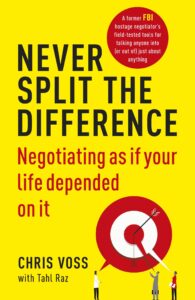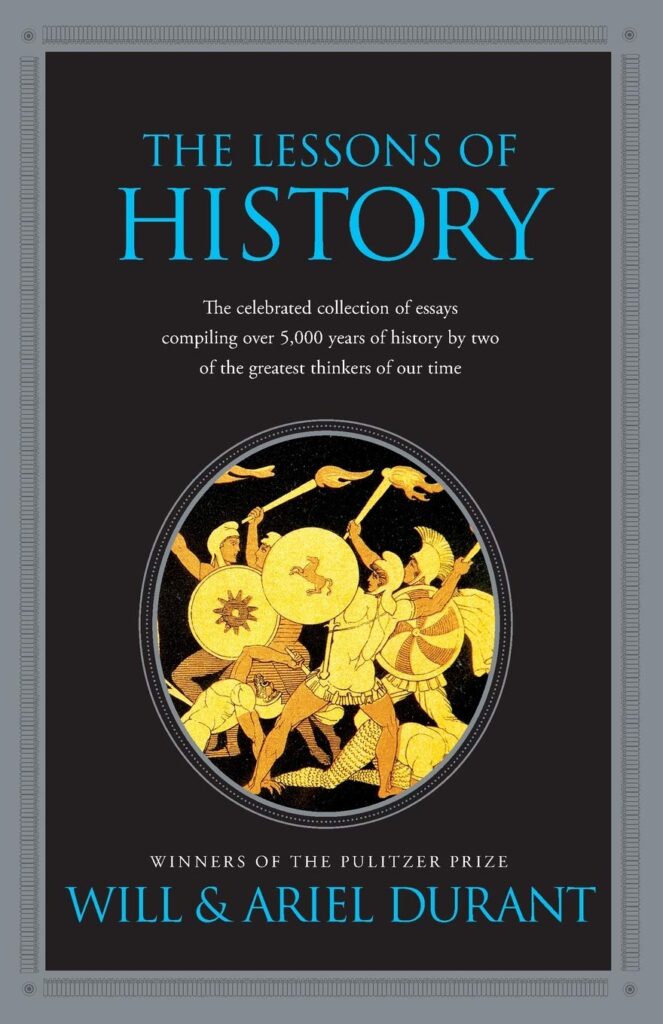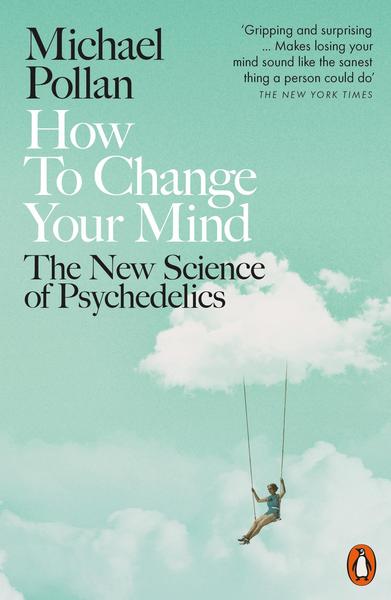
My Opinion
Highly useful tips on the art of negotiation. Ex-FBI Hostage Negotiator Chris Voss describes a range of tools and strategies that can be applied in almost any kind of negotiation. He pairs each tool with a real-life story from his own experience.
Reading Recommendation: 7/10
My Notes
The history of negotiations is closely related to the history of science. From a purely rational based approach (homo oeconomicus) to an empathy-driven one that incorporated the conception of humans as emotionally-driven creatures.
Voss states: “Negotiation […] is nothing more than communication with results.” As Kahneman and Tversky published their research in the field of Behavioural Economics questioning the fundamental tenets of science back then, the field of negotiation had to evolve centered around “Tactical Empathy”.
- For Voss, empathy is “the ability to recognize the perspective of a counterpart and the vocalization of that recognition”.
- Tactical is one step further aiming at understanding what is behind the feelings of a counterpart to increase leverage in negotiations
- If we look very closely at a person and observe their face, gestures and tone of voice a process called neural resonance is triggered. Our brain starts to align with our counterpart helping us to understand better their current feelings.
Fundamentally, this incorporates listening well, recognizing the counterpart’s perspective, gaining their trust and making them feel understood.
Don’t assume anything. Hold multiple hypotheses and listen carefully. Approach the negotiations with a “mindset of discovery”.
Don’t be too fast. Voss argues that one of the biggest mistakes we make is rushing the negotiation, making people feel not sufficiently heard.
Use your voice. Use your light and playful voice to relax your counterpart as a default voice. Use your “Late-Night DJ Voice” in selective circumstances – deep, soft, slow and reassuring.
Smile. People are much more likely to close a deal if they like their counterparts. Radiate warmth and be friendly. This is part of one of the most fundamental characteristics of humans – their reciprocity. People who are in a positive frame of mind think more quickly and are more likely to collaborate.
Mirror to connect. Use the last three words of what the counterpart just said. As Voss puts it: “Mirroring is the closest one gets to a Jedi mind trick.” As a reaction, people will elaborate on what they just said and further connection is created.
- In a study with two groups of waiters, one group used positively connotated words such as “great”, “no problem” and “sure” to confirm the order. The other group repeated the order back mirroring what was just said. The latter one received 70% more tips on average.
- Implementation tip: Start your mirror with “I’m sorry…”. Wait at least four seconds for the mirror to work. Repeat.
Label to create validation. Labeling is verbalizing your counterpart’s feelings creating validation. Show them that you understand how they feel.
- In one brain imaging study the psychology professor Matthew Lieberman of the University of California found that people react with fear to photos of faces expressing strong emotions. If this emotion is however labeled, the brain activity moves from the amygdala (the part that generates fear) to other areas that govern rational thinking. Labeling emotions decreases their intensity.
- Labels always start with
It seems
It sounds like
It looks like - Avoid the word “I” because it creates the impression that you are more interested in yourself than your counterpart.
Accusation Audits for labeling fears. Preface the conversation by labeling your counterpart’s greatest fears. We all do this intuitively. “I don’t want this to sound meant …” or “I don’t want to seem like an asshole…”. Doing this systematically however requires you to collect all negative things your counterpart could say about you. When labeling these negative things your counterpart’s reaction will be to add nuance and details to these aspects that provide further connection and a sense of understanding. (e.g. “You must think we are this big, bad prime contractor trying to push out the small businesses.”)
Start with ‘No’. Give your counterpart the opportunity to disagree. This is where the negotiations start. Saying ‘No’ creates a sense of control that is crucial for your counterpart to feel secure.
No can mean different things.
- “I am not yet ready to agree.”
- “You are making me feel uncomfortable.”
- “I do not understand what you mean.”
- “I don’t think I can afford it.”
- “I want something else.”
- “I need more information.”
- “I want to talk it over with somebody else.”
If your counterpart says ‘No’, ask “What about this doesn’t work for you”, “What would you need to make it work”, “It seems there’s something here that bothers you” to learn about the real meaning of their ‘No’.
In negotiations, everybody is driven by two primary needs: “The need to feel safe and secure and the need to feel in control”. ‘No’ gives your counterpart the opportunity to fulfill these needs and functions as a pause to slow things down.
Sometimes you need to antagonize your counterpart into ‘No’. If your counterpart isn’t listening, deliberately mislabeling their emotion is an effective method to listen and correct your statement.
Paraphrase to show that you understood your counterpart’s argument. The goal of paraphrasing is to create “That’s right” as a response.
Combining the tools to achieve your goals.
- Effective Pauses
- Minimal Encouragers (‘Yes’, ‘Ok’, ‘I see’)
- Mirroring
- Labeling
- Paraphrases
- Summary
Use deadlines to create a sense of urgency. It’s the fear of a potential loss that makes deadlines so effective. But be aware if you are under a deadline and don’t overestimate its importance. As Voss writes: “Deadlines are often arbitrary, almost always flexible, and hardly ever trigger the consequences we think – or are told – they will.
Understand that the need for fairness is hardwired into humans. A decade of brain-imaging studies shows that “the human neural activity, especially in the emotion-regulating insular cortex, reflects the degree of unfairness in social interactions.” This is equally true for nonhuman primates. In a study, two primates were unequally rewarded for performing the same task. The one that was less rewarded “literally went bananas.”
In a negotiation, follow these guidelines to gain leverage:
- Bend your counterpart’s emotions and manage expectations by performing an accusation audit before making an offer
- Unless you have an information advantage, let your counterpart go first with his offer.
- If you anchor a price, use ranges. “At Corp. XYZ people in this job get 110,000€.”
- Pivot to non-monetary terms. Find out what is cheap to them and valuable for you.
- When talking numbers, use odd ones. This shows that you have put a lot of thought into it.
Create the illusion of control but asking open-ended, calibrated questions. “We learned that negotiation was coaxing, not overcoming; co-opting, not defeating. Most importantly, we learned that successful negotiation involved getting your counterpart to do the work for you and suggest your solution himself.” Instead of saying “You can’t go.” say “What do you hope to achieve by going?”
As an old Washington Post editor named Robert Estabrook once said: “He who has learned to disagree without being disagreeable has discovered the most valuable secret of negotiation.”
Using calibrated questions takes the aggression out of a confrontational statement. Furthermore, your counterpart will be encouraged to speak.
Some evergreen calibrated questions:
- “What is the biggest challenge you face?”
- “What about this is important to you?”
- “How can I help to make this better for us?”
- “How would you like me to proceed?”
- “What is it that brought us into this situation?”
- “How can we solve this problem?”
- “What’s the objective? / What are we trying to accomplish here?”
- “How am I supposed to do that?”
Don’t use “why”. It will always trigger a defensive reaction.
We can use the word ‘No’ four times before actually saying the word.
- “How am I supposed to do that?” (request for help)
- “Your offer is very generous, I’m sorry, that just doesn’t work for me.” (soft and build empathy)
- “I’m sorry, but I’m afraid I just can’t do that.” (inability to perform can trigger further empathy)
- “‘I’m sorry, no.” (a softened version of just ‘No’)
Active listening goes beyond just the words. The 7-38-55 rule states that only 7 percent of a message is communicated verbally. 38 percent is based on the voice and 55 percent on the body language of your counterpart. Look for incongruence between the three components to spot lies or unresolved problems.
There are three types of negotiators. The analyst, the accommodator and the assertive.
- Analysts are methodical and diligent. They love details and will perform extensive research before every negotiation.
- When dealing with analysts, come prepared. Use data to back up your arguments.
- Accommodators are sociable, peace-seeking, optimistic and easily distracted.
- When dealing with accommodators, listen well and be friendly. They will value it. Also, be careful since they might leave out potential problem areas to avoid conflict.
- Assertives believe time is money. All they care about is winning. They have an aggressive and direct communication style.
- When dealing with an assertive person, make sure to first understand their point. Only then they will listen to you.
When it comes to bargaining, use the Ackerman model:
- Set your target price (your goal)
- Set your first offer at 65% of your target price
- Calculate three raises of decreasing increments (to 85, 95, and 100%)
- Use lots of empathy and different ways of saying “No” to get the other side to counter before you increase your offer.
- When calculating the final amount, use precise, non-round numbers. It gives the number credibility and weight
- On your final number, throw in a non-monetary item (that they probably don’t want) to show that you’re at your limit.
“In every negotiation, there are at least three Black Swans, three pieces of information that, were they to be discovered by the other side, would change everything.”
There are three kinds of leverage. Positive, negative and normative leverage.
- Positive leverage: You can give (or withhold) what your counterpart wants
- Negative leverage: The ability to make your counterpart suffer. You can threaten him to take something away he currently owns (strong due to loss aversion)
- Normative leverage: Using your counterpart’s norms and standards to your advantage.
Stichting it all together: your preparation before a negotiation.
- Write down your goal (best-case scenario).
- Prepare a summary. Write down in just a couple of sentences the facts that have led to this negotiation. Why are you here? What do you want? Why are they here? What do they want?
- Prepare three to five labels to perform an accusation audit.
- Prepare three to five calibrated questions.
- Prepare a list of non-cash offers possessed by your counterpart that would be valuable.

